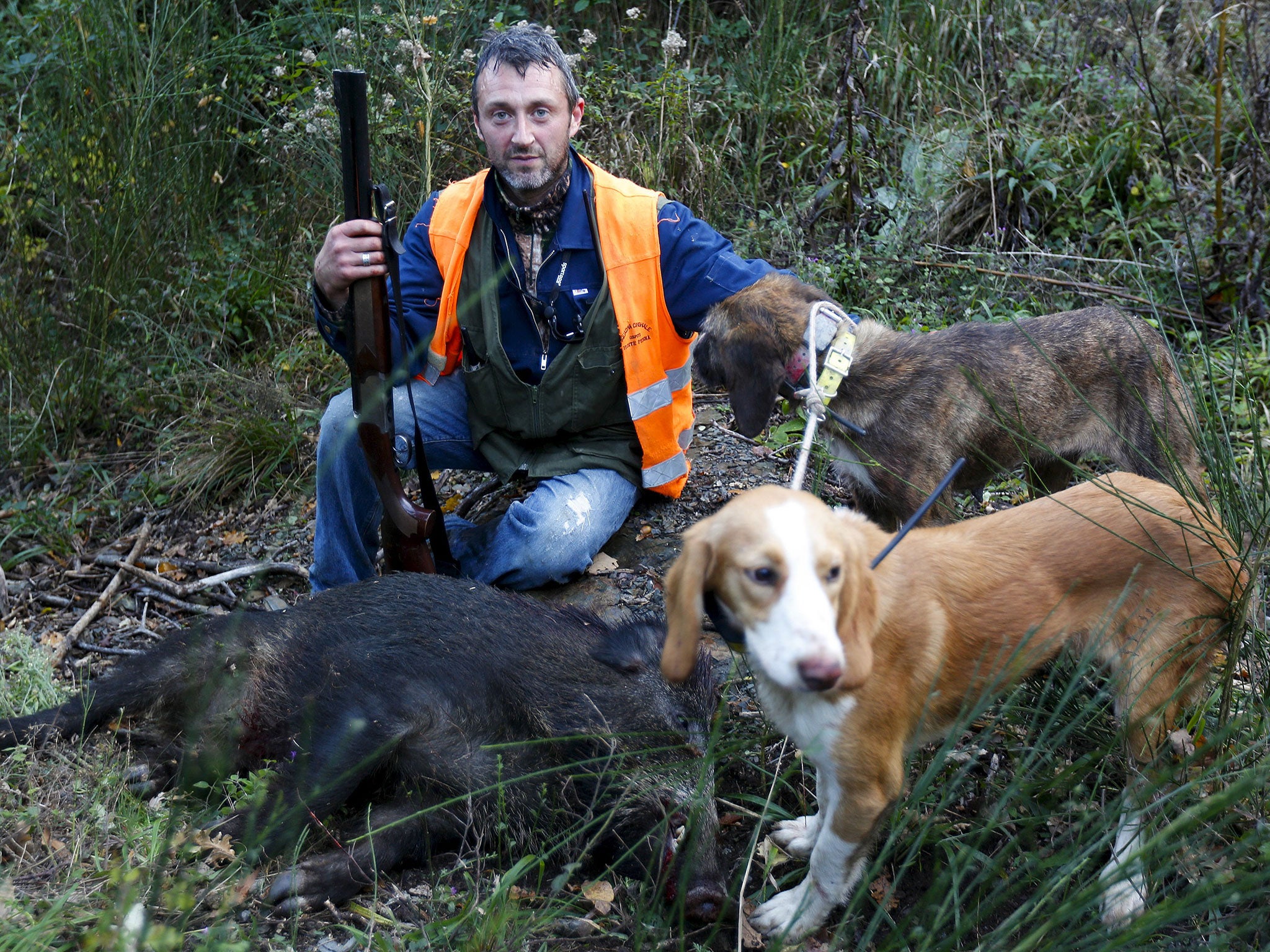Call for end to hunting curbs as wild boars rampage across Italy
The number of wild boar in Italy has almost doubled over the past decade until about a million animals roam the country, killing livestock and destroying crops

Dogs and men prick up their ears at a rustle in the undergrowth, a rifle cracks and a big black boar thuds to the ground, killed by a single bullet.
The hunters of Castell’Azzara, Tuscany, celebrate as they heave the 154lb sow and a handful of other slain animals back to their lodge to be skinned, but their haul barely dents Italy’s soaring wild boar population.
Extinct across much of the country by the end of the 1800s, the number of wild boar in Italy has almost doubled over the past decade and there are now about a million roaming the country, environmental and agricultural associations say.
Rampaging boar, along with other wild animals such as river rats, have caused €100m (£71m) of damage by destroying crops, killing livestock and causing road accidents in the past year, according to the Italian farmers’ organisation, Coldiretti.
If some unfortunate person comes across a sow with piglets, his life is at risk
Isolated accounts of attacks on people have also fuelled concern. A man died in the northern town of Iseo in May, apparently bitten by a boar, and a pensioner was reportedly attacked and killed while walking his dog in Sicily.
“If some unfortunate person comes across a sow with piglets, his life is at risk,” said Castell’Azzara native Francesco Vicarelli, 49, after taking part in the braccata (group hunt with dogs) on the first day of the new winter season.
Tuscany, whose largely unspoilt countryside conceals a higher concentration of boar than any other part of Italy, faces an “emergency” according to environment minister Silvia Velo. The animals were brought mainly from eastern Europe during the 1950s to facilitate hunting, which is as passionately defended by its practitioners as it is opposed by environmentalists. But hunting’s popularity has dwindled and hunters say they can only combat the burgeoning boar population if current curbs are loosened.
Authorities should let people “hunt freely, like they did once upon a time”, Mr Vicarelli said, referring to limits on when and where hunters can go and with how many dogs.
“We are not only there to kill the boar but to protect other animals, the hare and pheasants which are practically extinct because the boar destroy their nests.”
Furrows in the hillsides betray foraging for roots and plants by the animals.
“White and black truffles grow here, it is rich in fauna which is disappearing,” Mr Vicarelli said.
Bigger and more prolific than their native predecessors, the imported boar thrived as farmland was abandoned, leaving the smallholdings typical of Italian agriculture vulnerable. The efficacy of the braccata is widely disputed as a means of solving a problem it helped create. Selective culls are carried out in places where the group hunt is banned.
Boar raised on farms or shot in culls often end up in ragout, infused with juniper or lemon, and served with wide, flat ribbons of pappardelle pasta and a glass of chianti wine. But the wild boar are also partial to the local grapes, and vineyard owners have to put up electrified fences to keep them out.
One such vineyard owner, Edoardo Ventimiglia, said: “Boars are connoisseurs. They take the grapes when they are ripe, like great sommeliers. The only possible defence is to put up fences.”
Now Tuscany’s government is considering allowing longer periods for hunting hoofed animals such as boar and deer, as well as allowing farmers to trap the animals on their land. But the World Wide Fund for Nature in Italy says the best way to limit the boar population would be for farmers to trap them, and blames hunting lobby groups for preventing the spread of this practice.
However, that influence may be on the wane, as Mr Ventimiglia explained: “The hunters are getting older, so maybe in the end this will lead to different decisions being made.”
If some unfortunate person comes across a sow with piglets, his life is at risk
Subscribe to Independent Premium to bookmark this article
Want to bookmark your favourite articles and stories to read or reference later? Start your Independent Premium subscription today.

Join our commenting forum
Join thought-provoking conversations, follow other Independent readers and see their replies